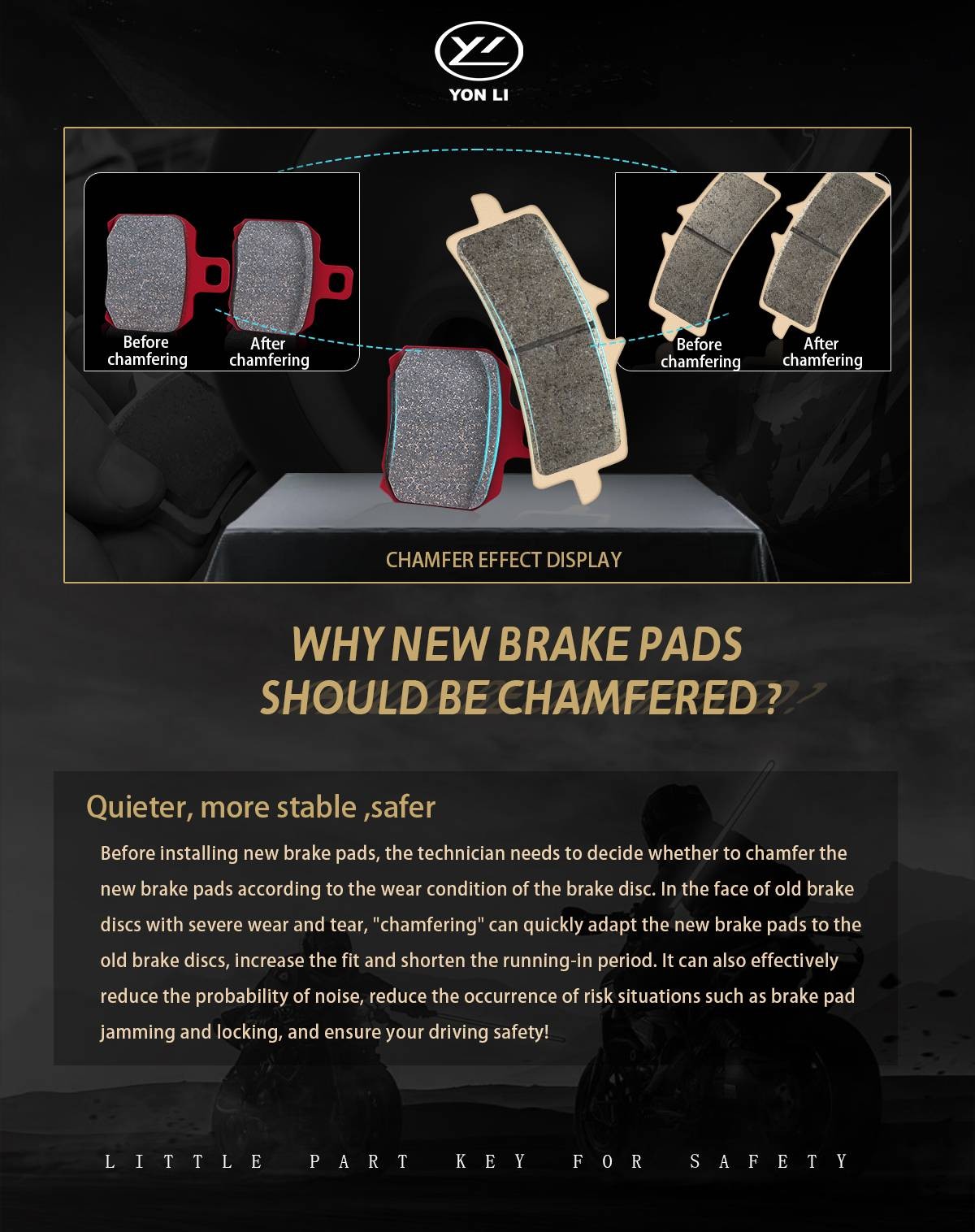Why Do Motorcycle Brake Pads Need to be Chamfered

Why Do Motorcycle Brake Pads Need to be Chamfered?
When it comes to motorcycle safety, braking is of utmost importance. As riders, we rely on our brake pads to bring us to a stop quickly and smoothly, ensuring our well-being on the road. But have you ever wondered why motorcycle brake pads need to be chamfered? In this article, we will explore the significance of chamfering brake pads and its impact on your riding experience.
What is Chamfering?
Before delving into the importance, it's essential to understand what chamfering is. In the context of brake pads, chamfering refers to the process of beveling or rounding off the edges of the brake pad material. This creates a sloping surface at the pad's outer edges.
Enhanced Performance
Chamfering your motorcycle brake pads plays a crucial role in maintaining their optimal performance. Here's why:
1. Noise Reduction
One common problem that riders face is brake squeal or noise. This unpleasant noise can be disruptive and even cause discomfort. Fortunately, chamfering the brake pads can effectively reduce noise levels. By rounding off the edges, any vibrations or harmonics generated during braking are minimized, resulting in a quieter ride.
2. Improved Pad Wear
Chamfered brake pads also promote more even and controlled pad wear. The beveled edges allow the pads to make full and uniform contact with the brake rotor. This helps distribute the braking force evenly across the pad surface, preventing premature or uneven wear. Ultimately, chamfering extends the lifespan of the pads and ensures optimal braking performance in the long run.
3. Heat Dissipation
Brake systems generate significant heat during braking. Chamfering the brake pads aids in heat dissipation by improving airflow and reducing thermal stress. The beveled edges allow air to flow smoothly over the brake pads, cooling them down. This helps prevent brake fade, a phenomenon where the brake performance deteriorates due to excessive heat.
4. Smooth Braking Experience
Finally, chamfered brake pads offer a smoother and more consistent braking experience. The rounded edges facilitate a gradual engagement of the brake pads onto the rotor surface, preventing any sudden jolts or abrupt stops. This enhances overall control and maneuverability, providing riders with a safer and more enjoyable ride.
Conclusion
While the importance of brake pads in motorcycle safety cannot be overstated, chamfering them is an often overlooked aspect. By rounding off the edges, chamfering enhances performance, reduces noise, ensures even pad wear, aids in heat dissipation, and delivers a smoother braking experience. As responsible riders, it is crucial to include chamfering as a regular maintenance practice, ensuring our safety and the longevity of our brake pads.
